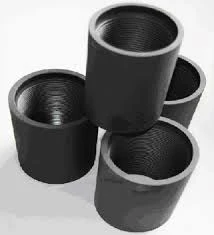- Afrikaans
- Albanian
- Amharic
- Arabic
- Armenian
- Azerbaijani
- Basque
- Belarusian
- Bengali
- Bosnian
- Bulgarian
- Catalan
- Cebuano
- Corsican
- Croatian
- Czech
- Danish
- Dutch
- English
- Esperanto
- Estonian
- Finnish
- French
- Frisian
- Galician
- Georgian
- German
- Greek
- Gujarati
- Haitian Creole
- hausa
- hawaiian
- Hebrew
- Hindi
- Miao
- Hungarian
- Icelandic
- igbo
- Indonesian
- irish
- Italian
- Japanese
- Javanese
- Kannada
- kazakh
- Khmer
- Rwandese
- Korean
- Kurdish
- Kyrgyz
- Lao
- Latin
- Latvian
- Lithuanian
- Luxembourgish
- Macedonian
- Malgashi
- Malay
- Malayalam
- Maltese
- Maori
- Marathi
- Mongolian
- Myanmar
- Nepali
- Norwegian
- Norwegian
- Occitan
- Pashto
- Persian
- Polish
- Portuguese
- Punjabi
- Romanian
- Russian
- Samoan
- Scottish Gaelic
- Serbian
- Sesotho
- Shona
- Sindhi
- Sinhala
- Slovak
- Slovenian
- Somali
- Spanish
- Sundanese
- Swahili
- Swedish
- Tagalog
- Tajik
- Tamil
- Tatar
- Telugu
- Thai
- Turkish
- Turkmen
- Ukrainian
- Urdu
- Uighur
- Uzbek
- Vietnamese
- Welsh
- Bantu
- Yiddish
- Yoruba
- Zulu
Exploring the Benefits and Applications of Seamless Pipe in Modern Industry
Understanding Seamless Pipes Applications, Benefits, and Manufacturing Processes
Seamless pipes are a vital component in various industries, known for their strength, durability, and versatility. Unlike welded pipes, seamless pipes are manufactured from a solid round steel billet, which is heated and molded into the desired shape without any seams or joints. This article explores the characteristics, manufacturing processes, benefits, and applications of seamless pipes, shedding light on their crucial role in modern industry.
Manufacturing Process
The manufacturing of seamless pipes begins with the careful selection of high-quality steel billets. These billets are heated to high temperatures and then pierced to create a hollow tube. The tube is further elongated and reduced in diameter through a process called elongation, which can be achieved using various methods like rotary piercing and extrusion. The next step often involves the use of a mandrel, which helps in achieving the desired internal diameter.
Once the seamless pipe is formed, it undergoes a series of finishing processes, which include heat treatment, surface cleaning, and inspection. These processes ensure that the pipes meet stringent quality standards and are free from any defects. The final product can be treated with different coatings to enhance its corrosion resistance, making it suitable for a wide range of applications.
Benefits of Seamless Pipes
1. Strength and Durability One of the main advantages of seamless pipes is their enhanced strength. The absence of a seam means there is less likelihood of failure under pressure. This makes seamless pipes a preferred choice in high-stress applications.
2. Uniformity Seamless pipes tend to have a more uniform structure compared to welded pipes. The manufacturing process allows for consistent thickness and smooth surfaces, resulting in improved flow characteristics for liquids and gases.
3. Corrosion Resistance With proper treatment and coating, seamless pipes can resist corrosion effectively, making them ideal for industries like oil and gas, where exposure to harsh environmental conditions is common.
seamless pipe

4. Versatility Seamless pipes are available in various materials, sizes, and configurations, allowing them to be utilized in a wide range of applications, from the construction of buildings to the transportation of fluids and gases in industrial settings.
Applications of Seamless Pipes
Seamless pipes find applications in numerous sectors, mostly where reliability and durability are critical. Some of the key industries utilizing seamless pipes include
- Oil and Gas Seamless pipes are extensively used in the oil and gas industry for drilling and transporting crude oil and natural gas. Their ability to withstand high pressure and temperature conditions is essential for ensuring safety and efficiency.
- Automotive In the automotive industry, seamless pipes are used in the construction of exhaust systems, fuel lines, and hydraulic systems, contributing to the overall performance and safety of vehicles.
- Construction Seamless pipes play a crucial role in structural applications within the construction industry, providing strong and reliable frameworks for buildings, bridges, and other infrastructure projects.
- Chemical Processing Their resistance to corrosion and high pressures makes seamless pipes suitable for the transportation of chemicals and other hazardous materials in the chemical processing industry.
In conclusion, seamless pipes are an indispensable element in various industries, thanks to their strength, durability, and versatility. Understanding their manufacturing processes and benefits can help organizations make informed decisions when it comes to selecting piping solutions for their specific applications. Whether used in oil rigs, automotive designs, or construction projects, the reliability of seamless pipes continues to set them apart as a preferred choice in modern engineering.
-
Tubing Pup Joints: Essential Components for Oil and Gas OperationsNewsJul.10,2025
-
Pup Joints: Essential Components for Reliable Drilling OperationsNewsJul.10,2025
-
Pipe Couplings: Connecting Your World EfficientlyNewsJul.10,2025
-
Mastering Oilfield Operations with Quality Tubing and CasingNewsJul.10,2025
-
High-Quality Casing Couplings for Every NeedNewsJul.10,2025
-
Boost Your Drilling Efficiency with Premium Crossover Tools & Seating NipplesNewsJul.10,2025







